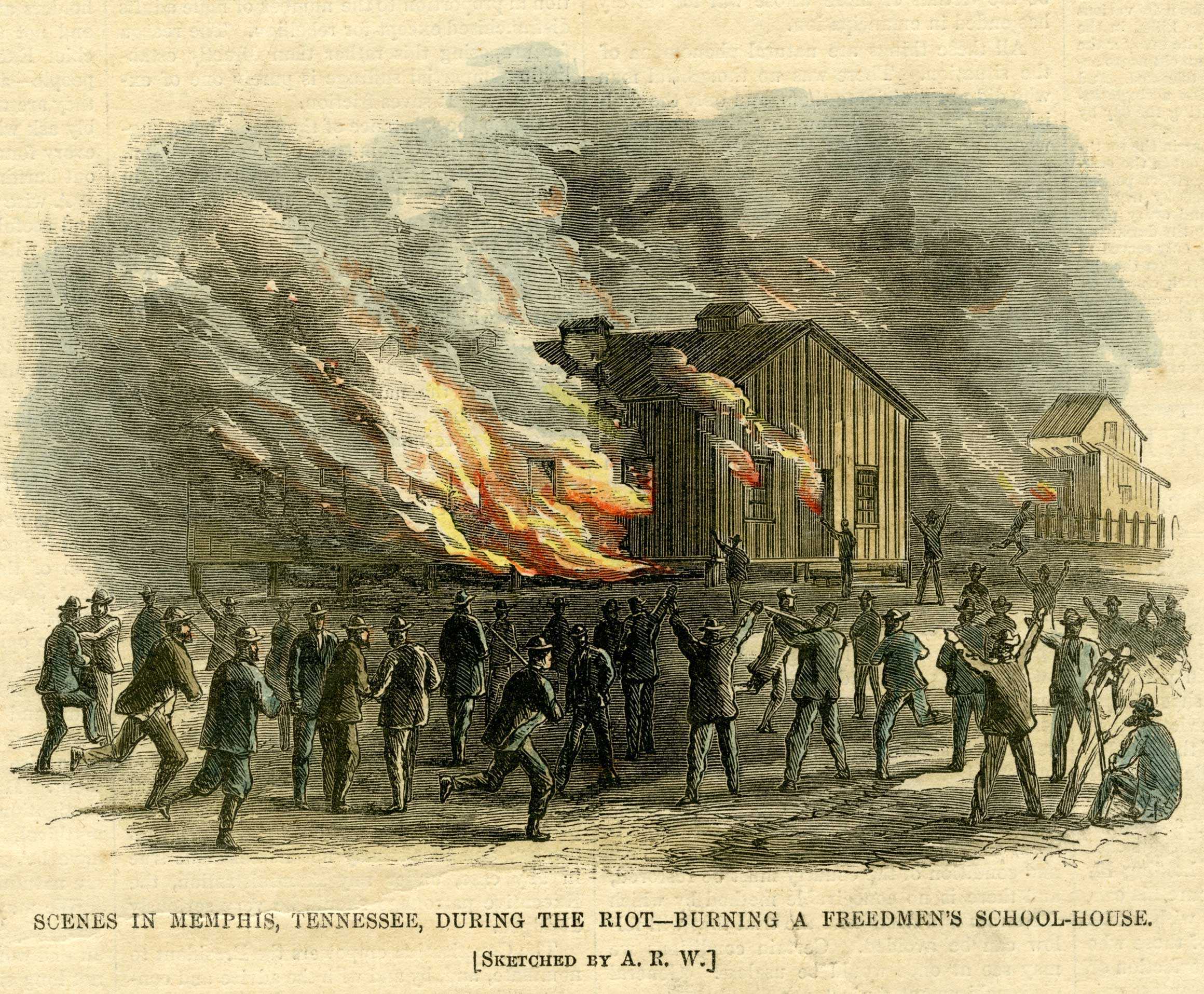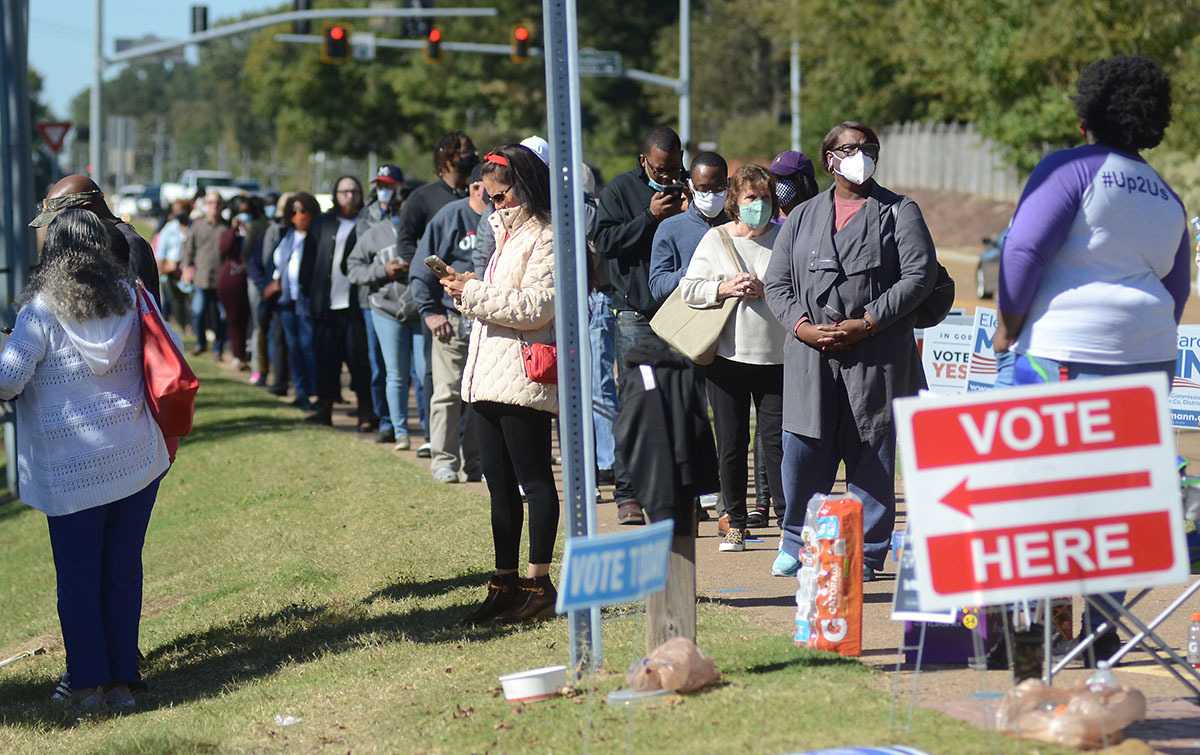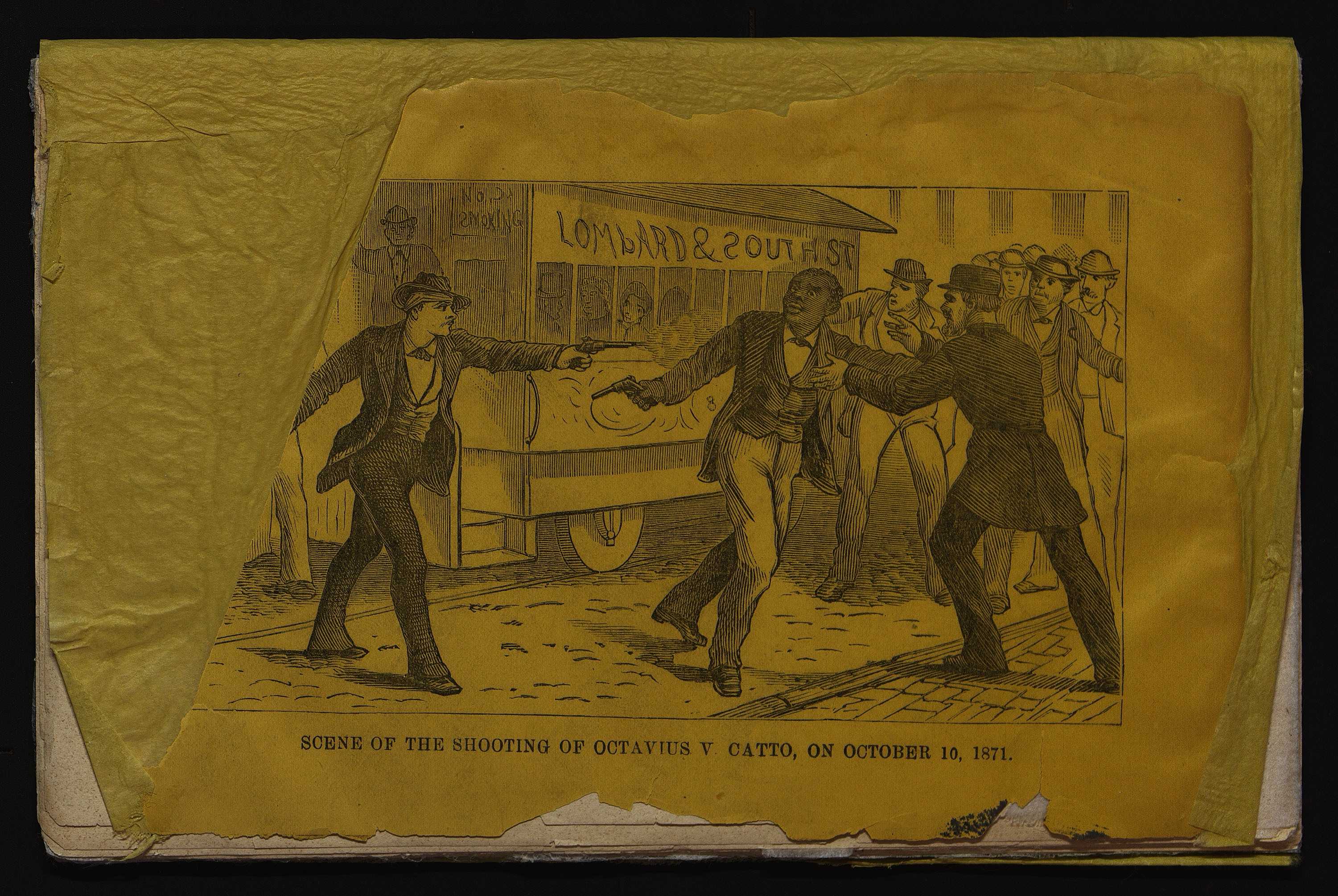Historic Event
The Memphis Massacre

Massacre in Memphis
Scenes in Memphis, Tennessee, During the Riot—Burning a Freedmen’s School-House
On May 1, 2, and 3, 1866, mobs of white civilians and law enforcement attacked the African American community in Memphis, Tennessee. Initially targeting Black U.S. soldiers who had an altercation with white policemen, the mobs soon turned to assaulting and shooting down any Black person they could find. During the three-day massacre, an estimated 46 African Americans were killed, dozens more were injured, and at least five women and girls were raped. The mobs also committed robberies, looted homes and businesses, and burned down all the Black churches and schools in the city.
Survivor Testimony
Congressional report on the Memphis Massacre, 1866
The first major outbreak of racial violence after the Civil War, the Memphis Massacre sparked national outrage and prompted a congressional investigation. The official report on the massacre, released in July 1866, included hundreds of pages of eyewitness testimony. Many of the witnesses were Black residents of Memphis. They risked retaliation to come forward and testify, in hopes of getting justice.
… the policemen and white citizens just shot everybody they found.
Jane Sneed, 1866
Jane Sneed’s Testimony
Jane Sneed came to Memphis in 1862, the year Union forces captured the Confederate city. She was among thousands of formerly enslaved African Americans who came to Memphis during the Civil War seeking freedom. In May 1866, Sneed was living near Fort Pickering with her husband and their 14-year-old daughter, Rachael. Sneed witnessed the initial clashes between Black soldiers and white policemen and later saw the mob firing upon people in the street. The next day, her daughter Rachael was shot and killed by a white man while helping a neighbor remove items from his burning house. Listen to an excerpt from Jane Sneed’s testimony about the Memphis Massacre, read by Lisette Booty.
They drew their pistols and said they would shoot us and fire the house if we did not let them have their way with us.
Frances Thompson, 1866
Frances Thompson’s Testimony
Born enslaved in Alabama, Frances Thompson, a transgender woman, had built a new life as a free woman in Memphis, where she earned a living by sewing and taking in washing and ironing. On the night of May 1, 1866, seven white men broke into her house. Two of the men were policemen. First they demanded food. Then they took turns beating and raping Thompson and a 16-year-old girl, Lucy Smith, who lived with her. The men robbed Thompson of her belongings and life savings and threatened to burn down the house before they finally left. Listen to an excerpt from Frances Thompson’s testimony about the Memphis Massacre, read by Adirah Robinson.
I could hear the screams of the children . . .
Henry Porter, 1866
Henry Porter’s Testimony
Henry Porter came to Memphis from Illinois in 1863. By May 1866, he owned a grocery store and was living with his wife, mother, and young daughter. During the massacre, Porter witnessed many acts of violence, including shootings, robberies, and arsons. Several of the perpetrators were white men he knew by name. Porter also saw white US soldiers who had been sent to quell the mob taking part in the violence. Listen to an excerpt from Henry Porter’s testimony about the Memphis Massacre, read by Vincent Stovall.
Scenes in Memphis, Tennessee, During the Riot—Shooting Down Negroes on the Morning of May 2, 1866
Aftermath
The Memphis Massacre was a defining moment in the post-Civil War period known as Reconstruction. Public outcry over the attacks fueled support for federal laws and policies designed to protect the rights of African Americans, including the 14th Amendment. Southern states were required to ratify the amendment and grant voting rights to Black men.
But despite the volumes of evidence collected, no one was ever prosecuted for the Memphis Massacre. Violence against African Americans continued throughout the South during Reconstruction. By the 1870s, the federal government had retreated from its promises to protect Black civil rights. White supremacy, in the form of Jim Crow segregation, voter suppression, and the terror of lynching, became the daily reality for African Americans in the South. The history of the Memphis Massacre, like other events of Reconstruction, was whitewashed, distorted, downplayed, or ignored.
One hundred and fifty years of silence does not break easily or cleanly.
Beverly Greene Bond and Susan Eva O’Donovan, Remembering the Memphis Massacre, 2020
1866 Memphis Massacre Marker
1866 Memphis Massacre Marker
In recent years, scholars, community leaders, and concerned citizens have taken steps to publicly recognize and truthfully reckon with the history and legacy of the Memphis Massacre. For the 150th anniversary of the massacre on May 1, 2016, the Memphis chapter of the NAACP collaborated with the National Park Service to install a historic marker in Army-Navy Park. This event marked the culmination of a public educational campaign, the Memphis Massacre Project, which included lectures, workshops, and an academic symposium hosted by the University of Memphis.


